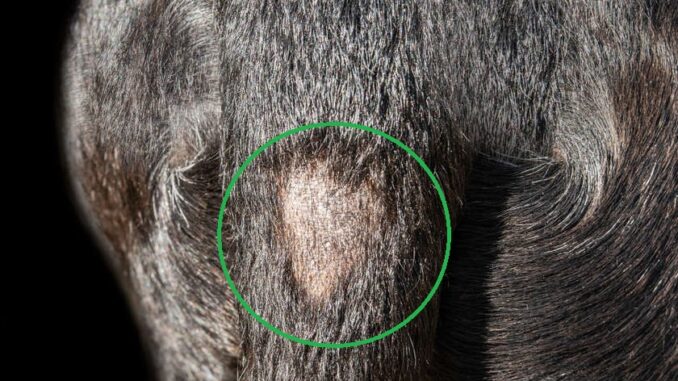
This article was updated on December 13th, 2023
We see many worried dog owners and their furry friends through our doors, wondering if a new bald spot or hair loss patch on their dogs is something they should be worried about. At a minimum, they want to know what’s causing it and how we can solve the problem!
In this article, our veterinarians Dr. Jamie Whittenburg & Dr. Linda Simon explain the top causes (with pictures) and tips on what you can do next.
Key highlights:
– A patch of hair loss is generally not an urgent situation: monitor it at home and call your vet if you see no improvement after a week
– Call your vet if you see other signs such as itching or skin redness
– There are many causes of patchy hair loss in dogs. Luckily, most can easily be treated
– Most likely causes include hot spots, fleas, mites, and skin infections
– A dog with a new bald spot might continue to lose hair if nothing is done
– Chlorhexidine and skin supplements might help
5 things you should know about patchy hair loss in dogs
There can be many causes of patchy hair loss or localized bald spots in dogs, most of which can be resolved with vet care, medication, and time.
1. Monitor the bald patch for up to a week and contact your vet if you see no improvement
According to our veterinarian Dr. Linda Simon, fur loss is generally not an urgent situation, and most dogs with fur loss are well in themselves:
“For mild fur loss that is improving, the pet may not need to see their vet. If, for example, they have had fleas and the fleas have been treated from home, we’d expect any fur lost to grow back within a couple of months with no additional intervention. If fur loss is unexplained, not resolving, or coupled with other signs (like itchiness or scabs), then I’d advise a vet check within the next few days.”
If your dog is not showing any signs of illness or discomfort, and the bald spot seems to be very localized, you may chose to monitor the patch of hair loss over a week or so. However, if it does not improve, or if you see any signs such as itching, skin redness, or broken skin, call your veterinarian to book a routine check up.
2. Most causes of patchy hair loss can be solved quickly with the right treatment
“As worried as you might be about your dog’s bald patches or hair loss, most causes aren’t serious. In fact, most of them can be easily remedied with appropriate treatments.”
The right treatment will depend on the cause. In the next few paragraphs, we will review the most likely causes (with pictures):
Note: If your dog is also itchy, read our article about Itchy Dogs Losing Hair.
1. Hot Spot (Moist Dermatitis)
Hot spots are red, typically moist, patches of hair loss due to irritation. They can occur anywhere on the dog, but are most common behind the ears and on the rear end/hip area.
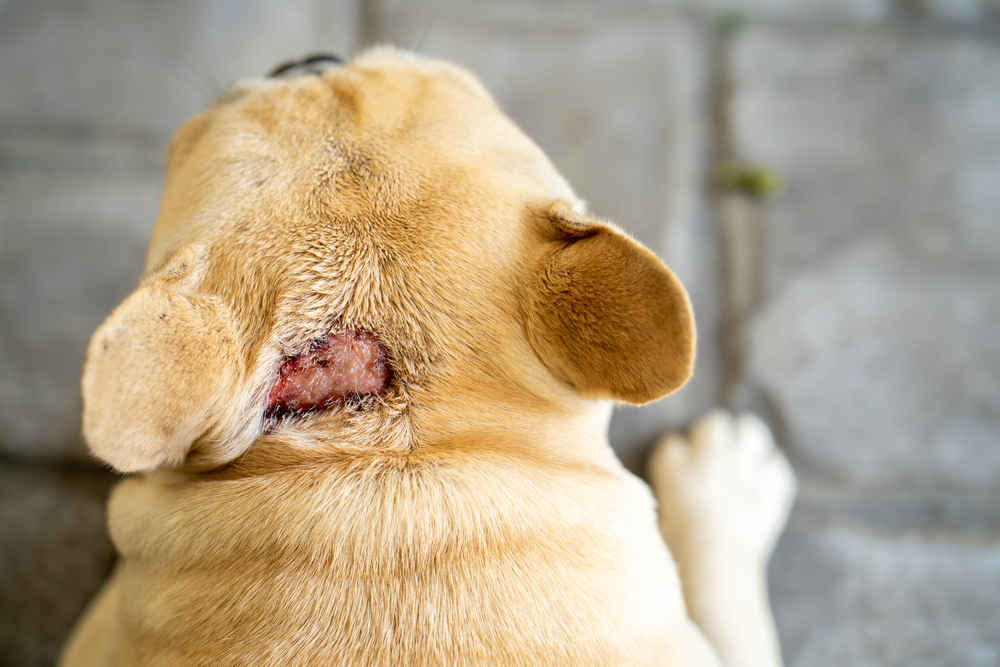
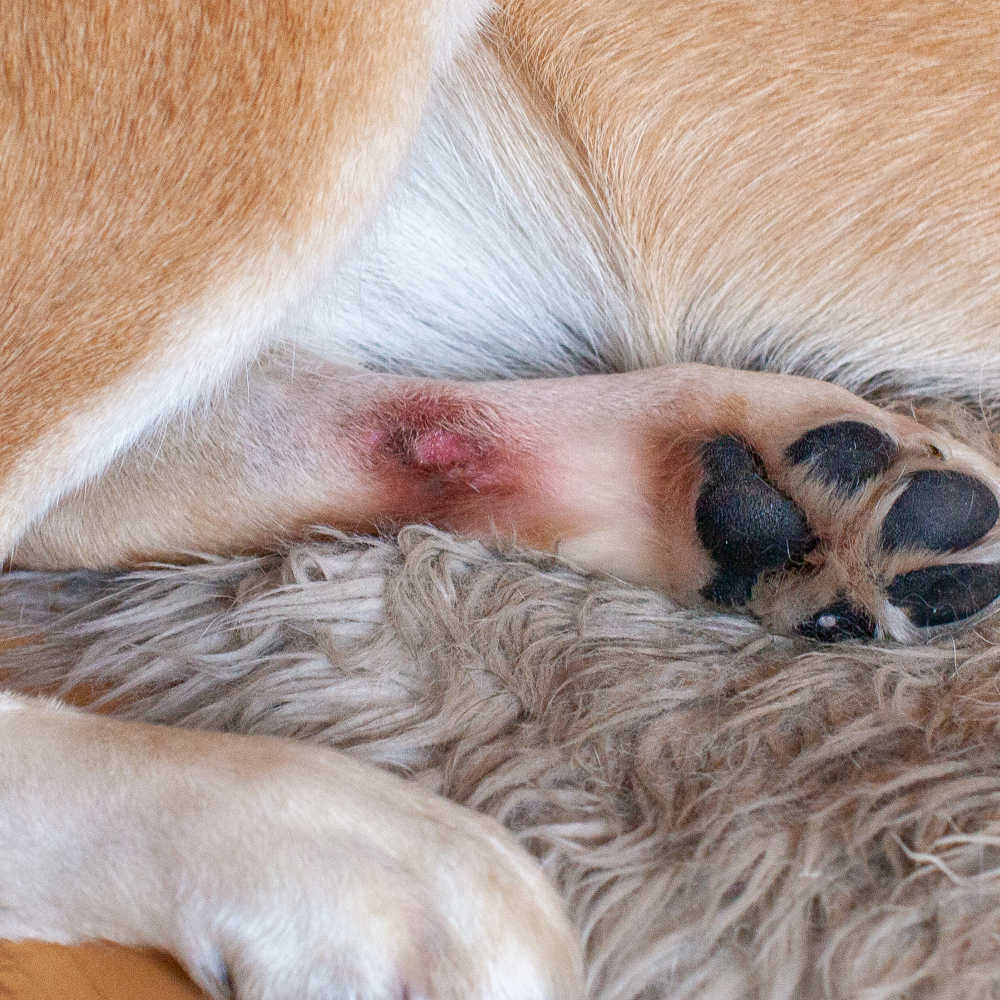
The area will be inflamed, may have matted hair over it or around it, and may have a purulent discharge and foul smell. Untreated, hot spots will make your dog miserable as they are painful and extremely itchy. The spot will also likely grow in size as it continues to irritate your dog.
At home, while waiting for your dog’s veterinary appointment, you can help the spots from getting worse by putting a t-shirt or baby onesie on them to discourage licking and scratching. Keep your dog inside in a cool area with plenty of fresh water.
To treat a hot spot, a veterinarian will shave the area and clean the spot. Antibiotics, anti-inflammatories, and allergy medications may all be necessary. Learn more about Hot Spots: Pictures & Treatments.
2. Parasites (mites and fleas)
Mites and fleas may cause hair to fall out in patches, and the lesions may be red, inflamed, and itchy, or simply hairless. Besides bald spots, fleas in dogs often cause itching, redness, and small black dots (flea dirt) on the fur. Mites can lead to crusty skin, and intense scratching.
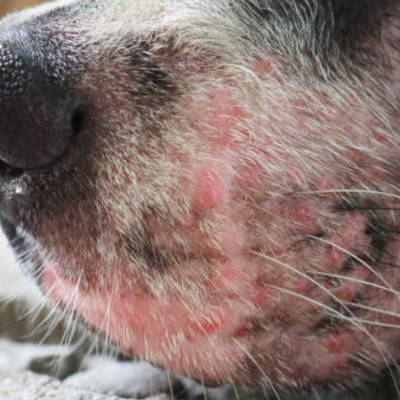
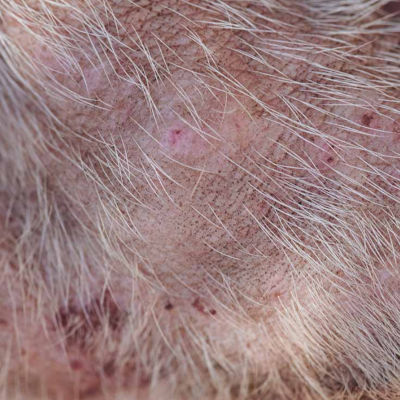

Fleas can often be seen running along your dog’s skin if you part the hair or comb it backwards. They are very small, black to dark brown insects that run and jump; they are not attached to the skin. Read our article about Flea Allergies & Skin Issues in Dogs.
Mites cannot be seen with the naked eye, but are a common cause of patchy hair loss (as shown on the picture below).
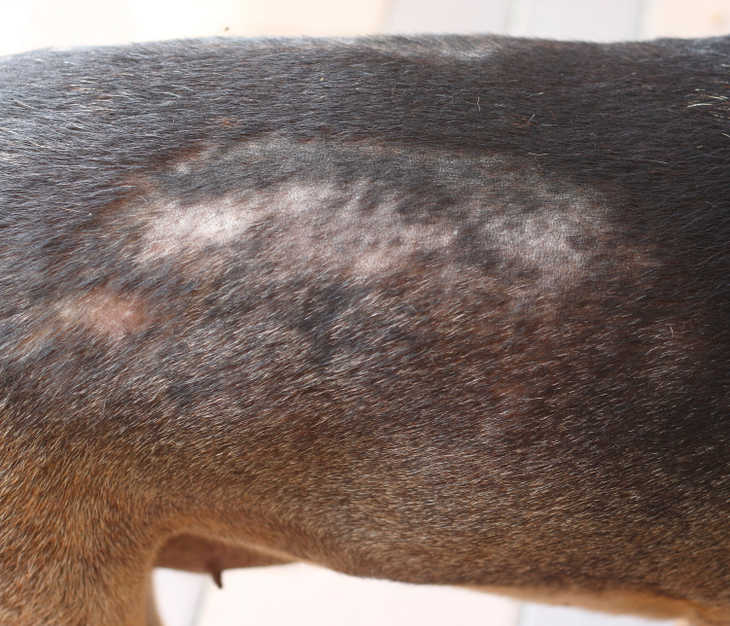
If you suspect that your dog might have external parasites causing their bald spots, they need to be seen by a veterinarian for a proper diagnosis and treatment. At home, while awaiting your appointment, you can try bathing the dog in water with a small quantity of mild dish detergent if you suspect fleas, or a soothing dog shampoo with oatmeal to relieve discomfort and itching.
Your dog’s veterinarian will use a flea comb to identify fleas and a deep skin scraping under the microscope to identify mites. Depending on which parasite your dog is infested with, the doctor will advise you on proper treatment and prevention.
3. Fungal Infection (Ringworm)
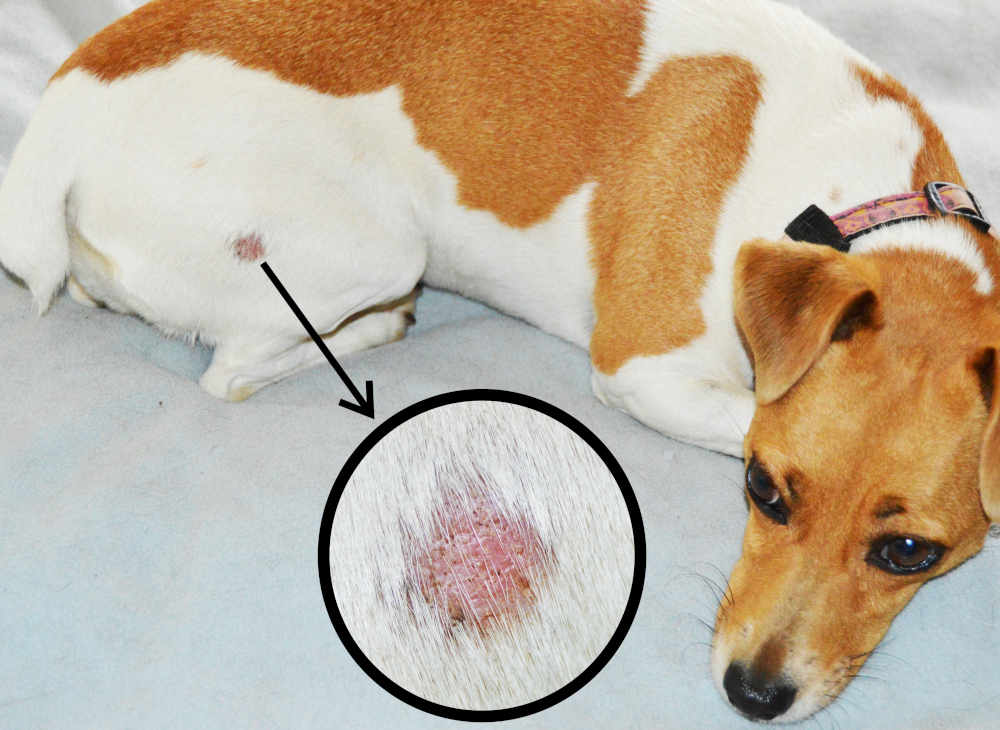
Despite the name, ringworm isn’t a worm at all. This circular hair loss is caused by a fungal infection and is contagious to other animals as well as humans. Typically, these lesions are round in shape with a hairless center, and they grow larger in a concentric fashion.
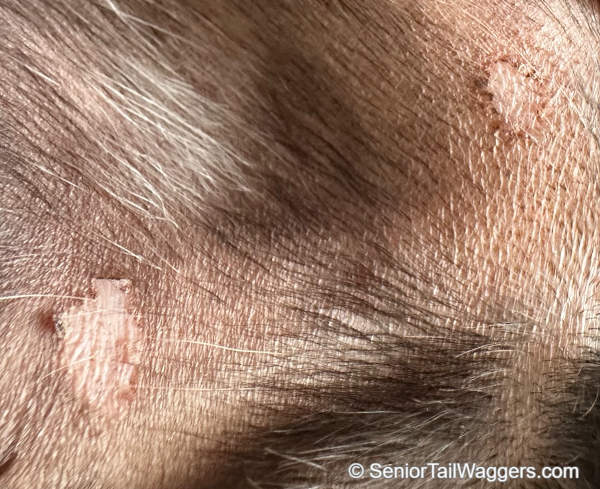
“Dogs suspected of having ringworm should be seen by their veterinarian as soon as possible to ensure that the diagnosis is accurate. Ringworm needs to be treated promptly and appropriately to keep it from spreading to other animals, humans, or contaminating the pet’s environment. It is also important to evaluate the dog’s overall health and immune function, as being affected by ringworm may indicate a deeper, more serious issue with their immune system.”
At home, before their veterinary appointment, you can provide some comfort to your dog with suspected ringworm by bathing them with a soothing oatmeal shampoo.
The dog should be kept isolated from other pets and the family as this is a contagious disease. Owners should wear gloves when handling the pet.
Your veterinarian will use a combination of history, lesion appearance, Wood’s Lamp illumination, and fungal cultures or testing to diagnose your pet with ringworm. They will prescribe appropriate medications and advise you if further medical testing is necessary.
View more pictures of ringworm in dogs with our veterinarian team’s advice.
4. Cushing’s disease
Dogs affected with Cushing’s disease typically have:
- a pot-bellied appearance,
- patchy hair loss (especially on the tail), and
- other signs such as panting and excessive drinking.
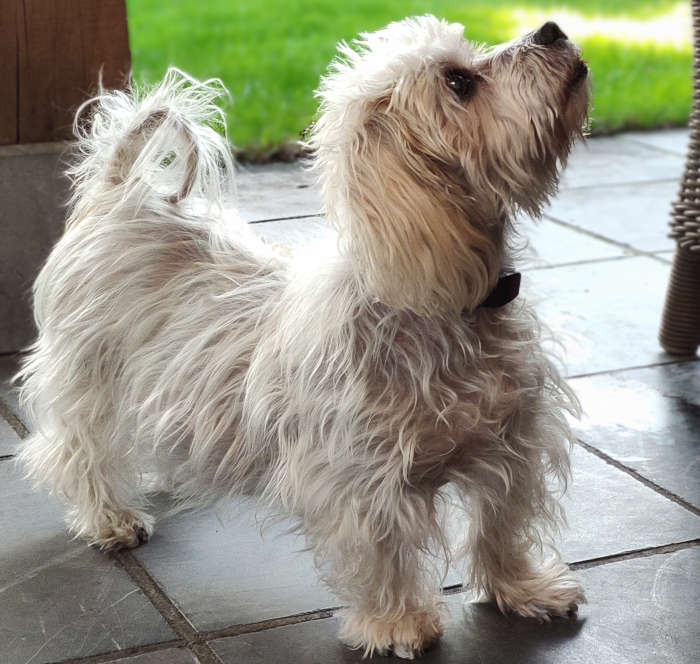
“Diagnosing Cushing’s can be difficult, but this disorder can be fatal if left untreated. There is no home remedy or treatment for hyperadrenocorticism. If you are concerned your dog may be affected, they need to be seen by their veterinarian as soon as possible.”
If blood testing confirms Cushing’s, your veterinarian will guide you through appropriate treatment. Most dogs are treated with lifelong daily medications and will require frequent medical monitoring.
5. Seasonal Flank Alopecia
Seasonal flank alopecia is most often seen in bulldog breeds and Boxers. The hair loss tends to occur on either side of the dog’s abdomen, in the flank area, as shown on the picture below.
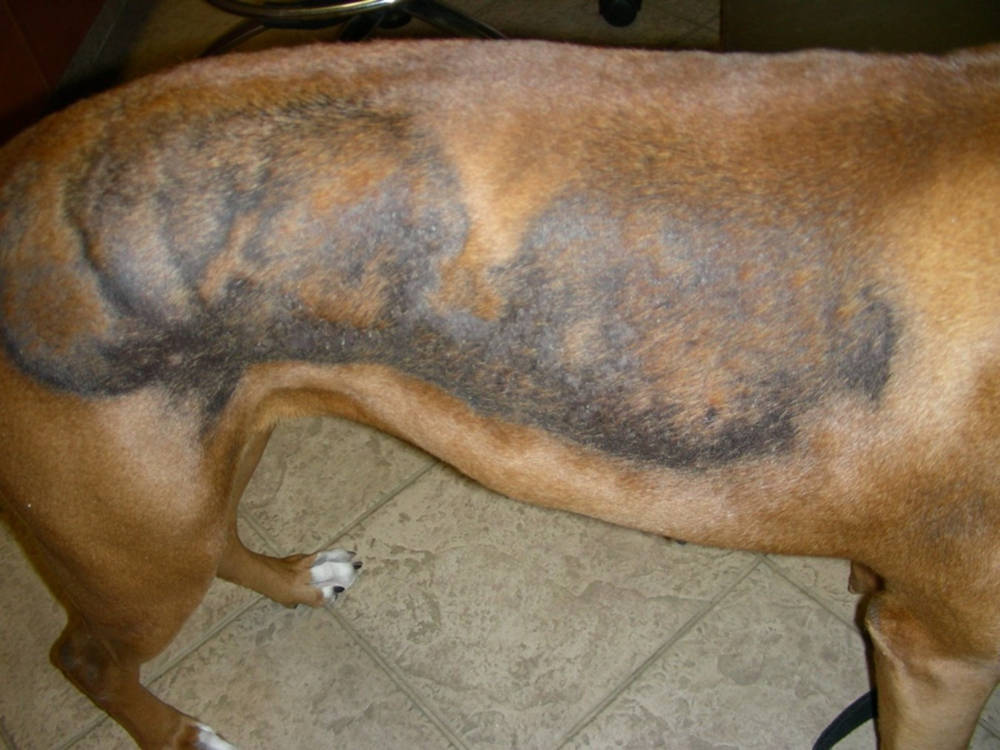
Hair loss from seasonal flank alopecia
The skin is not affected and the condition is not itchy. This disorder is most typically seen in the winter months in the United States. Seasonal flank alopecia itself is a benign condition and rarely requires treatment. However, it can easily be confused with other less benign conditions such as hypothyroidism and hyperadrenocorticism, which require treatment. Learn more about seasonal flank alopecia.
3. A dog with a new bald spot might continue to lose hair if nothing is done
Many pet owners take a ‘wait and see’ approach to their dog’s ailments. After all, you don’t always need to rush to the vet at the first sign of something unusual. This can be fine for if your dog is not showing other signs of illness or discomfort and the situation is improving.
However, depending on the cause, the problem may worsen over time. This can sometimes mean your dog will continue to lose hair until they receive the right treatment. This is particularly true if you see any signs such as itching or skin redness or irritation. Don’t hesitate to call your vet if your dog is not comfortable or if things are not improving.
4. Chlorhexidine might help dogs with localized fur loss
For localized fur loss, an owner may trial a medicated wash like Chlorhexidine, which can help keep surface bacteria and yeast levels down. The solution is diluted 1:10 in water so it forms a pale pink wash. This is then applied and kept on the skin for 5 minutes before rinsing. Delicate areas including the eyes should be avoided.
Owners are also encouraged to ensure their pet’s flea and mite prevention is up to date.
It is not a bad idea to trial a skin supplement containing ingredients such as Vitamin E and fish oils, to help strengthen the skin barrier and encourage fur growth.
If your dog’s patchy hair loss is causing them discomfort, you should give your dog a warm bath with a soothing oatmeal shampoo (this may be temporarily helpful) and enact methods to keep your dog from scratching or licking the area (for example using an e-collar).
However, keep in mind that your dog’s new patch of hair loss may also due to a medical condition that needs veterinary intervention – don’t delay veterinary care if your dog’s condition gets worse or if your dog is uncomfortable.
5. Diagnosis at the vet often involve tests like skin scrapes or biopsies
When you take your dog with patchy hair loss into the veterinarian, they will begin by taking a detailed history and performing a thorough physical examination. Depending on the suspected cause of the hair loss, your dog may require skin scrapes, biopsies, fungal cultures, or blood testing. These procedures tend to cost between $100-$500. Treatment varies widely, dependent on the cause, but can add $50-$200 to the initial visit.
Frequently Asked Questions
Can hair loss be prevented?
While not all conditions that result in bald spots and hair loss can be avoided, some can be through:
- Preventative parasite treatments
- A clean living environment
- Adequate nutrition – ask us about the food we recommend
- Removal of allergens
Are dogs with a new patch of hair loss more likely to keep losing hair?
Whether or not the dog is going to continue to lose hair depends entirely upon what is causing the hair loss. However, most conditions will worsen without appropriate treatment.
It is common for some of these conditions to begin with a single, small patch of hair loss. How quickly the condition will progress depends on the underlying cause. Owners should try to have their pet seen by a veterinarian as soon as possible to decrease their discomfort and to make treatment easier.
What are the signs that an appointment at the vet is needed?
Any unexplained patchy hair loss warrants a visit to the veterinarian. Because our pets cannot talk and express their discomfort, often problems are left untreated for too long. This results in not only unnecessary discomfort for the dog, but also results in treatment being longer, more expensive, and more involved than it would have been had the condition been addressed earlier.
Related posts:
Disclaimer: This website's content is not a substitute for veterinary care. Always consult with your veterinarian for healthcare decisions. Read More.





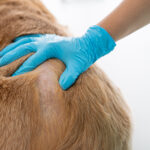
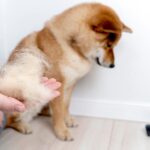
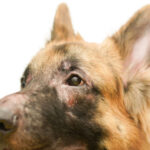
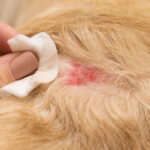
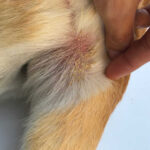



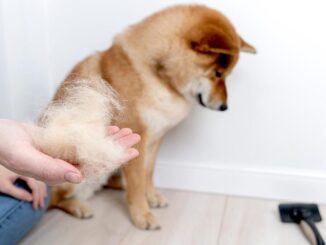
Be the first to comment